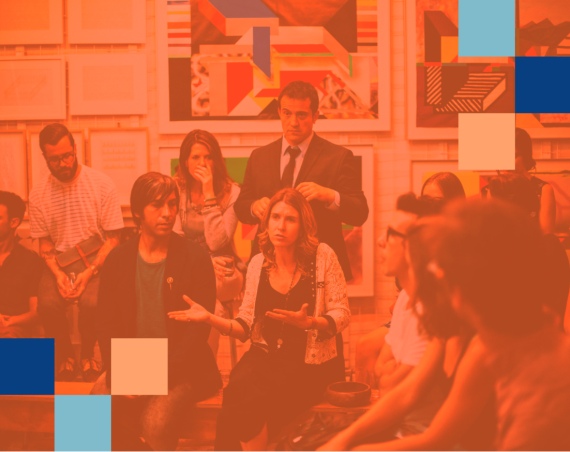We hear it often: you want to reach more of your community, and go beyond the same 10 loudest voices in the room. You want your process to be more inclusive so that everyone has the tools necessary to fully participate. However, some groups are harder to reach than others. So how do you reach beyond your usual audience?
Mix engagement methods to reach more of your community
Mixing offline and online participation methods can help you reach a wider audience. Doing this provides multiple opportunities to participate, and is a more equitable method of asking people to engage because it meets people where they are versus asking them to work around work schedules, caretaking needs, or transportation barriers.
What impacts the inclusivity of your community engagement?
There are several key factors that can have a big impact on the inclusivity of your platform. These include:
- Language: Make everyone feel welcome and included by ensuring that communication about your project is available in all the main languages that are spoken in your community. The same rules apply for visual language: images and photos should reflect a diversity of cultures, ethnicities, abilities, genders, and ages.
- Launch for inclusion: Getting the word out across different social groups is essential. Your community is diverse, and everyone should be aware of your project or platform. Consider the kinds of content or media they consume to ensure you’re sharing your message widely. A great way to reach as many people as possible is to collaborate with community influencers: either by sharing the news in relevant Facebook groups or by involving community organizations in outreach.
- Easy user experience (UX): A digital platform should be clear and accessible, i.e. by being compatible with all kinds of devices. The software should also cater to the visually impaired, which can be verified with an accessibility label such as WCAG 2.1 AA (part of CitizenLab’s platform). If your participation platform is not user-friendly for different audiences, it will automatically exclude them from participating in your projects, so this should not be taken lightly.
Evaluate inclusion during your community engagement process
While taking these factors into consideration is not a guarantee for participation, it’s important that you take the steps necessary to ensure inclusivity. Measure your results along the way and adjust your strategy if you feel you’re not reaching a diverse enough audience. If specific stakeholders are missing from the conversation, you could consider addressing them directly to ensure they have at least had a clear opportunity to engage with the project.
The City of Leiden started a participation project to transform their local park into a modern sports park, together with local residents. Through a survey on their platform, about 1,000 community members shared their ambitions for the park and the final design proposal was drawn up by the city in co-production with a working group of ten selected residents and representatives from involved organizations. During the working group’s meetings, the results of the survey were taken into account to make decisions.
The big advantage of digital participation is that you reach citizens who normally don’t attend town halls. That’s why we launched a digital platform in January 2020. Our first project concerned the redesign of ‘het Roomburgerpark, a local park. Citizens not only received a letter, but we also communicated about the project in our city newspaper, digital newsletter, and on social media. Communication should be tailored to your citizens and remains a process that you have to reconsider along the way. This allows you to evaluate, make adjustments and involve your target audience as much as possible. As we believe it is key that anyone who wants to participate, can do so.
Hester Tuinhof, communications advisor of the municipality Leiden
In case you’re looking for more tips on setting up an inclusive participation project, make sure to check our free guide on inclusive community engagement.
Learn more best practices and guidelines for community engagement:
- Guide: The steps you need to take to create a sustainable and effective community engagement strategy for your government agency.






